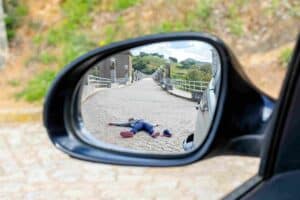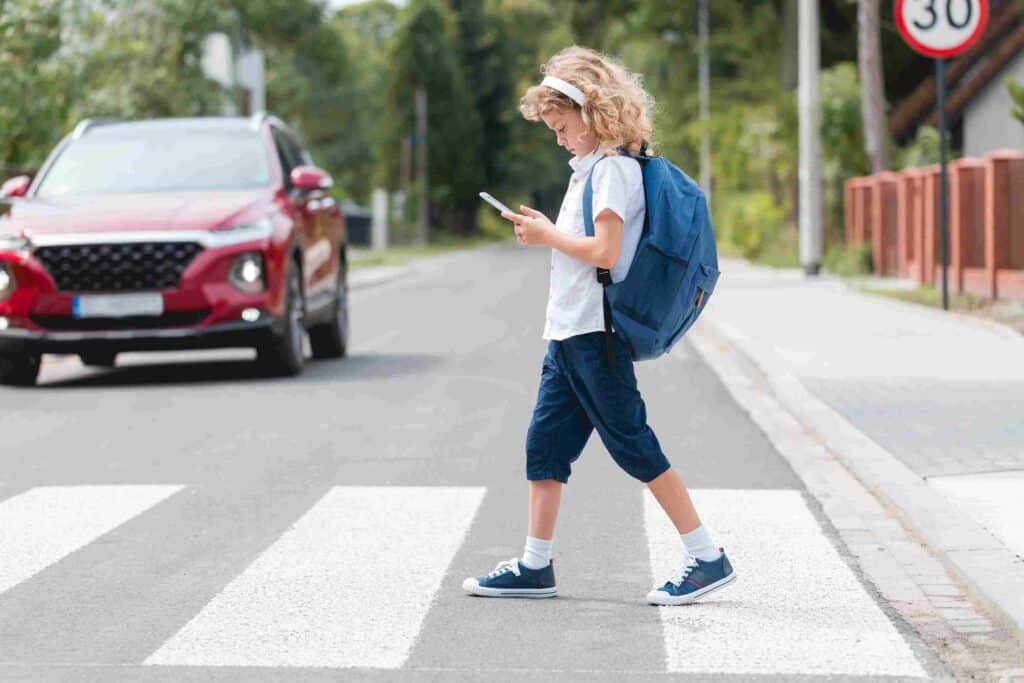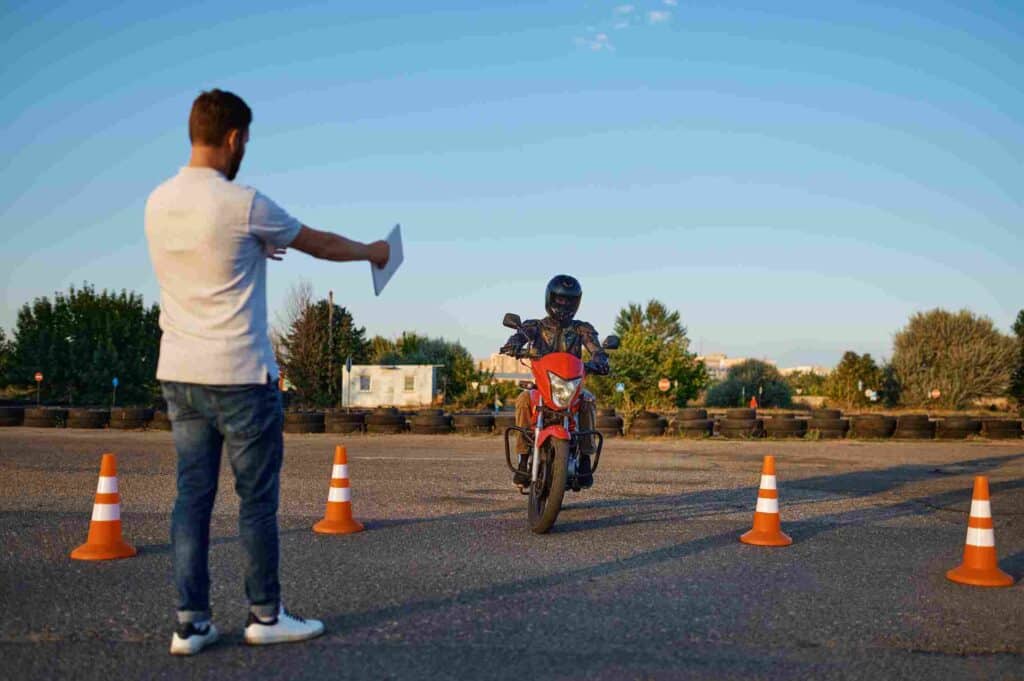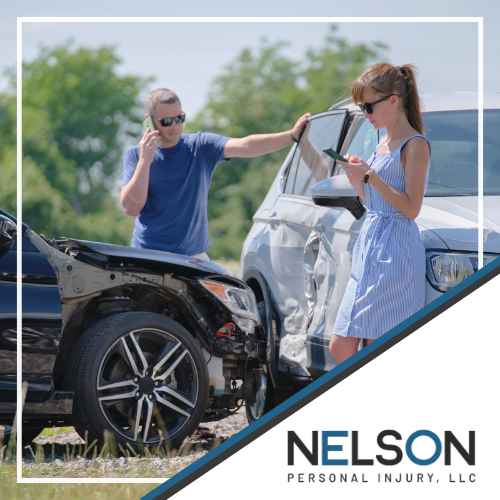Walking in Minneapolis should not feel like walking through a minefield, but for too many pedestrians, it is. As an accident law firm in Minneapolis, MN, we at Nelson Personal Injury, LLC, have represented injured individuals and grieving families who were blindsided by an accident that should never have happened. Understanding where the most dangerous intersections in Minneapolis are, and what to do if you are hit is critical to protecting your health, rights, and financial future.
This article breaks down where the risks are highest, why pedestrian accidents happen, what Minnesota law says about fault, and how we, as your Minneapolis pedestrian accident lawyer, can help if the unthinkable happens.
Pedestrian Accidents Are on the Rise in Minnesota
In recent years, Minnesota has seen an alarming uptick in pedestrian fatalities. According to the Minnesota Department of Public Safety, 56 pedestrians were killed on state roadways in 2024, marking a 25% increase over the previous year.
Injuries were even more widespread, with hundreds of pedestrians hospitalized after being hit by vehicles. These numbers are especially concerning in urban areas like Minneapolis, where foot traffic and traffic congestion intersect.
While the Twin Cities’ metro area touts itself as pedestrian and walking-friendly, it presents many dangers for those on foot. Minneapolis ranks among the top cities in Minnesota for pedestrian injuries and fatalities. Despite efforts to redesign infrastructure, hazardous crossings remain, and they are where the majority of incidents occur.
The Most Dangerous Intersections in Minneapolis
Not all intersections pose equal risk. According to data from the Minneapolis Department of Public Works, the following areas consistently appear at the top of the list for pedestrian crashes:
1. Lake Street and Lyndale Avenue
This intersection has long been considered one of the worst in Minneapolis. Between 2006 and 2015, it led all others in pedestrian crashes. Heavy traffic volume, confusing lane design, and limited pedestrian crossing visibility make it a persistent hazard. Add in the area’s commercial nature—with shops, restaurants, and bars—and the risk multiplies during peak hours.
2. Nicollet Avenue and Franklin Avenue
Located just south of downtown, this intersection is one of the city’s most collision-prone. A 2014 Star Tribune report noted that 11 pedestrians were injured here in three years. Complicating matters is the high volume of bus and bike traffic sharing the space, with limited room for safe pedestrian maneuvering.
3. Hennepin Avenue and Lagoon Avenue
This Uptown intersection combines heavy vehicular traffic with nightlife foot traffic. According to a 2017 study, it was among Minneapolis’s top 25 worst intersections for pedestrians. Combining wide crossing distances and short pedestrian signals increases the likelihood of mid-crosswalk conflicts.
4. Broadway Avenue and Lyndale Avenue
Broadway and Lyndale are at another intersection with grim reputations. Surrounded by industrial and commercial businesses, it experiences high truck traffic. Limited pedestrian infrastructure and multiple turning vehicle lanes have made it particularly risky.
5. West Broadway and Emerson Avenue
This intersection is near several schools and community centers, putting children and families at risk. Speeding and distracted driving are common complaints in the area, making it one of the more hazardous corridors for pedestrians in North Minneapolis.
Many of these intersections are located within the “High Injury Network,” a group of just 23 streets that account for over 70% of fatal and severe crashes in Minneapolis, according to Vision Zero Minneapolis.
Why Are These Intersections So Dangerous?
Poor Infrastructure
Many of these intersections lack sufficient pedestrian safety features. Crosswalks may be unmarked or faded, signal timing may not allow enough time for elderly or disabled pedestrians, and traffic-calming infrastructure is frequently absent.
Driver Behavior
Speeding, failure to yield, and distracted driving are among the top contributors to pedestrian accidents. Even though Minnesota law requires drivers to stop for pedestrians in crosswalks, compliance is inconsistent at best.
Night Visibility
According to the National Highway Traffic Safety Administration (NHTSA), the majority of pedestrian fatalities occur at night. Drivers are less likely to see someone crossing in poorly lit intersections, especially in inclement weather.
Complex Intersections
Busy intersections with multiple turning lanes and short green lights often pressure drivers to move aggressively. Pedestrians caught in the middle are especially vulnerable when vehicles make unprotected left-hand turns.
What Does Minnesota Law Say?
Right-of-Way at Crosswalks
Minnesota Statutes Section 169.21 outlines pedestrian and driver responsibilities:
- Vehicles must stop for pedestrians in any marked or unmarked crosswalk at intersections.
- If a pedestrian enters a crosswalk lawfully, vehicles must remain stopped until the pedestrian has crossed the lane in which the vehicle is stopped.
Violations can result in traffic citations, liability in civil claims, and even criminal penalties if serious injury or death occurs.
Mid-Block Crossing
While pedestrians are generally protected, Minnesota law also requires them to obey signals and avoid suddenly leaving the curb in front of a moving vehicle. Pedestrians are prohibited from crossing between two adjacent intersections controlled by traffic signals unless using a crosswalk.
Comparative Fault
Minnesota follows a modified comparative fault rule under Minn. Stat. § 604.01. This means a pedestrian can still recover damages even if they were partially at fault, as long as their fault does not exceed 50%. If a pedestrian is found to be 20% at fault for the accident, their compensation will be reduced by the corresponding percentage.
What to Do If You Are Hit by a Car While Walking
Pedestrian accidents can be overwhelming. Victims often suffer from shock, serious injuries, and emotional trauma. Knowing what to do in the aftermath can help preserve your legal rights and maximize compensation.
1. Seek Immediate Medical Help
Call 911 or ask someone to do so. Even if injuries seem minor, internal injuries or concussions can worsen over time. Medical documentation will also serve as key evidence in your personal injury claim.
2. Call the Police
A police report provides an official account of the incident, including witness statements, the driver’s information, and the officer’s observations. This documentation is crucial when filing an insurance claim or pursuing legal action.
3. Document the Scene
Take photos of your injuries, the vehicle, license plate, crosswalk, and traffic signs. Get contact information from witnesses who can verify your version of events.
4. Do Not Speak to the Insurance Company Alone
The at-fault driver’s insurance provider may contact you quickly, requesting a recorded statement. Politely decline until you have legal representation. Insurance adjusters are trained to minimize your claim.
5. Contact a Minneapolis Pedestrian Accident Lawyer
We at Nelson Personal Injury, LLC have represented countless clients hurt in pedestrian accidents. As an experienced accident attorney in Minneapolis, we help you understand your rights, calculate the full value of your claim, and pursue justice through settlement or trial.
Common Injuries in Pedestrian Accidents
The injuries pedestrians suffer in a collision with a vehicle are often catastrophic due to the sheer lack of protection. Some of the most common injuries include:
- Traumatic brain injuries (TBI)
- Spinal cord injuries
- Fractured limbs
- Internal bleeding
- Pelvic fractures
- Road rash and lacerations
- Psychological trauma, including PTSD
These injuries often require extensive treatment, surgery, and long-term rehabilitation. Recovery can take months or even years.
Damages You May Be Entitled To
As a pedestrian hit by a negligent driver, you may be able to recover compensation for:
- Medical expenses (past and future)
- Lost wages and reduced earning capacity
- Pain and suffering
- Emotional distress
- Permanent disability
- Loss of enjoyment of life
- Punitive damages (in limited cases)
We work tirelessly to quantify the accident’s full impact on your life, helping you obtain the compensation you deserve.
Why Choose Nelson Personal Injury, LLC?

Our approach is hands-on. We:
- Investigate every aspect of the accident
- Work with medical and accident reconstruction experts
- Negotiate aggressively with insurance companies
- Take cases to trial when needed
Every case we handle receives personalized attention and a commitment to justice.
Preventing Future Accidents: What Minneapolis Is Doing
The city has committed under the Vision Zero initiative to eliminate traffic deaths and severe injuries by 2027. These efforts include:
- Installing more pedestrian-activated crossing signals
- Reducing speed limits on city-owned streets to 20-25 mph
- Increasing high-visibility crosswalks and signage
- Re-designing streets using Complete Streets principles
Still, change is slow, and dangerous intersections remain. Until those changes are complete, pedestrians must stay alert, and negligent drivers must be held accountable.
FAQs
Can I still recover damages if I was not in a marked crosswalk?
Yes, Minnesota law protects pedestrians in marked and unmarked crosswalks at intersections. Comparative fault may occur if the accident happened between intersections without a crosswalk.
What if the driver fled the scene?
Hit-and-run pedestrian accidents are, unfortunately, common. If you were hit by a driver who fled, you may still recover compensation through uninsured motorist coverage or pursue a civil claim once the driver is identified.
How long do I have to file a pedestrian accident claim in Minnesota?
The statute of limitations for most personal injury claims in Minnesota is six years from the accident date. However, other types of claims may have shorter deadlines. It is essential to promptly speak with a Minneapolis pedestrian accident lawyer to protect your rights.
How much is my pedestrian accident case worth?
Every case is different. Factors include the severity of your injuries, total medical costs, whether you lost wages, and how the accident affected your quality of life. Our team can evaluate your claim and provide a realistic estimate.
What if I was partially at fault?
Minnesota’s comparative fault system allows you to recover damages even if you were partly to blame, as long as your fault does not exceed 50%. Your percentage of fault will reduce your award.
What to Know About the Most Dangerous Intersections for Pedestrians
Pedestrian safety in Minneapolis is a growing concern, especially at high-risk intersections like Lake and Lyndale or Nicollet and Franklin. The results can be devastating when drivers fail to yield, speed through crosswalks, or allow distractions to cloud their judgment. We at Nelson Personal Injury, LLC, are here to ensure injured pedestrians have a voice and the legal support they need to recover.
If you or a loved one has been hit by a car in Minneapolis, contact our office today. As your accident attorney in Minneapolis, we will fight for justice and stand by your side every step of the way.



